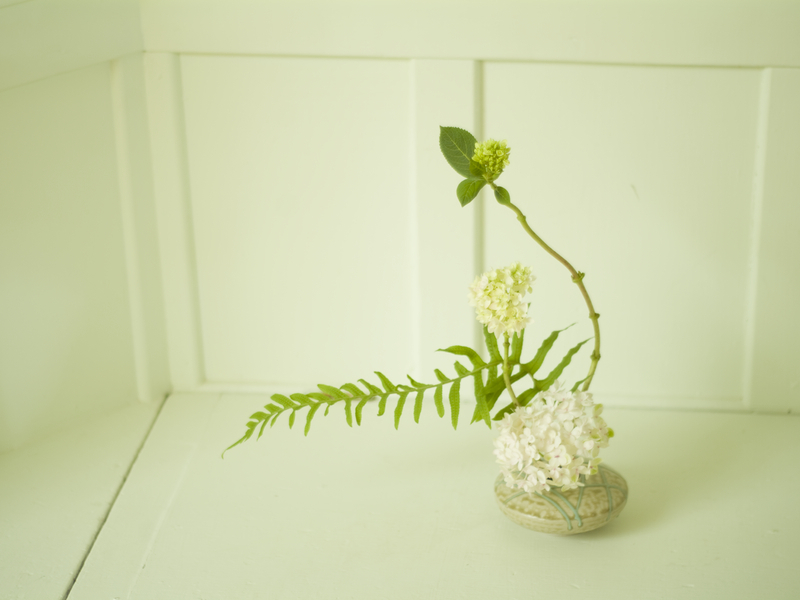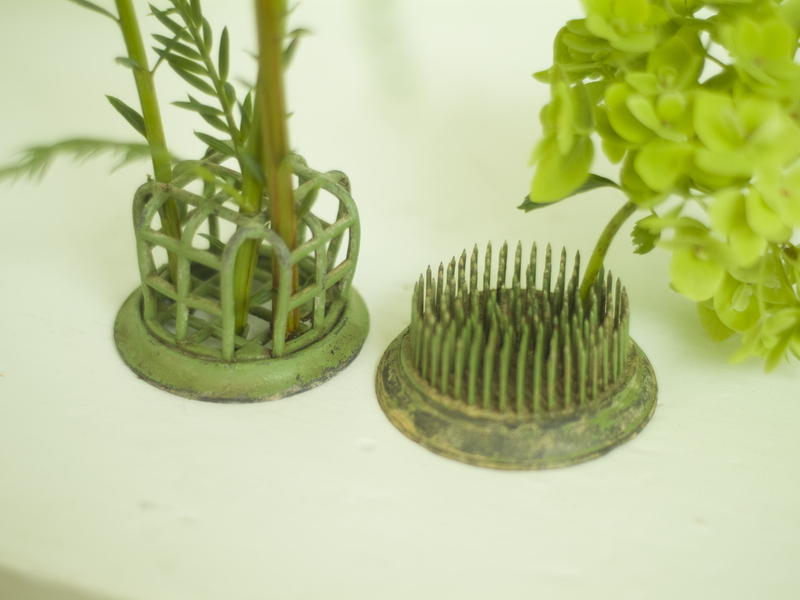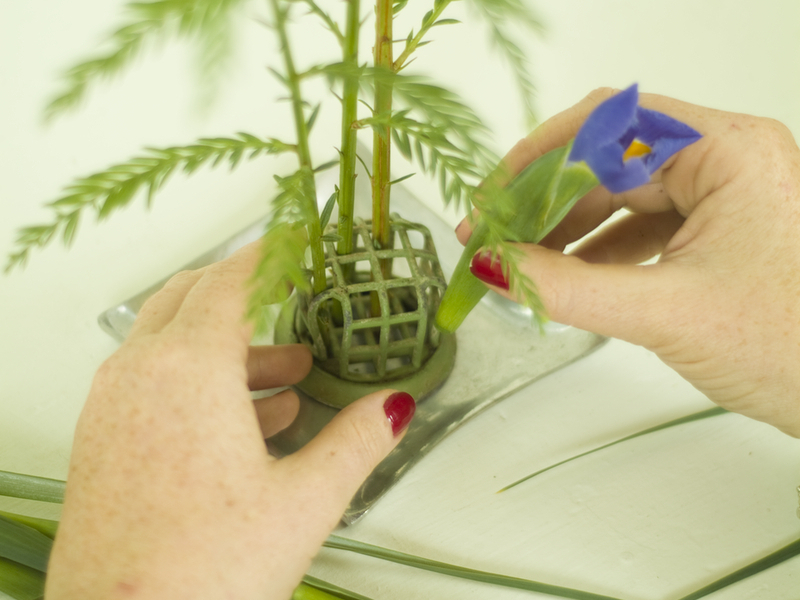Though we can’t go into all the technical rules of ikebana here, (and I don’t adhere to them myself), I do want to inspire you to look at flowers with a discerning eye, to find unusual lines in an arrangement, and to develop a sense of poetic importance. It is the beauty of a moment, or the perfection of a natural scene, that should be captured in ikebana, the same way those things could be captured in a haiku.
Ikebana is known as the art of Japanese flower arranging, but the word literally means the arrangement of plant materials. This means the artist is not limited only to the showy and colorful blooms of traditional Western florists.
Monks from ancient times offered flowers at temples, and just as bonsai developed as a discipline, ikebana has also evolved. There are many styles, but the two most commonly seen are moribana and nageire. Moribana means “piled up,” and this style is presented in low, shallow containers. Nageire arrangements, translated as “thrown in,” are made in tall vases. One basic premise of ikebana is the idea that the arrangement symbolizes heaven, mankind, and earth, each of which is represented by different elements in the arrangement.
Many rules govern the schools of ikebana, dictating the height of stems, types of containers, and even the angles at which stems can be placed. These rules are important, but even the novice can benefit from working with plants and flowers in the ikebana style.




















